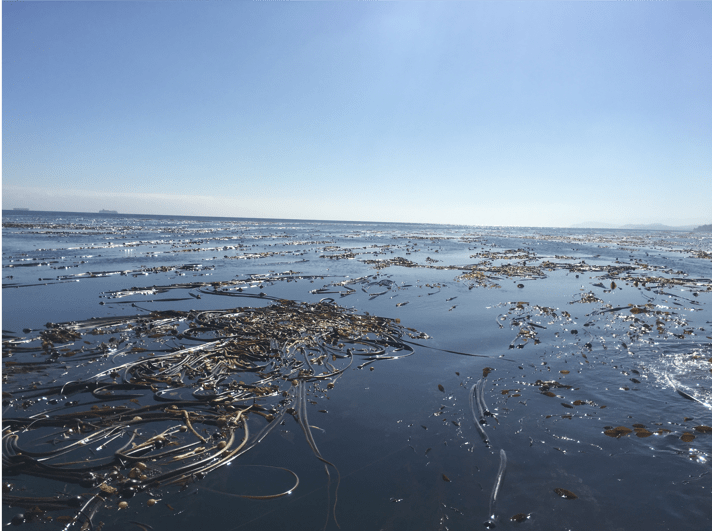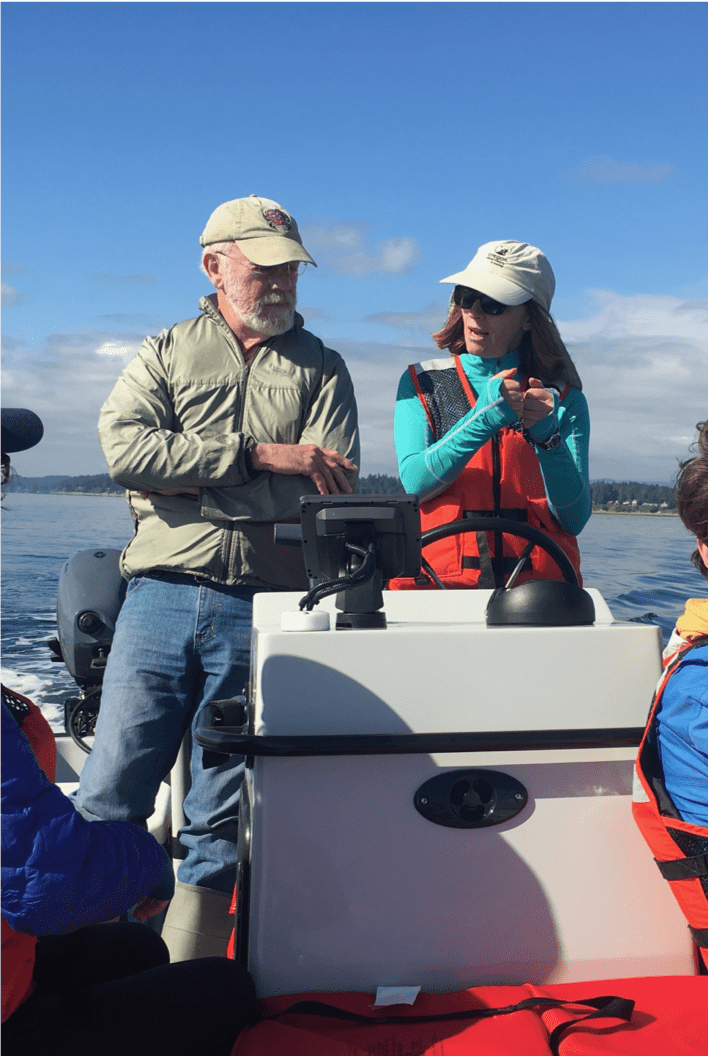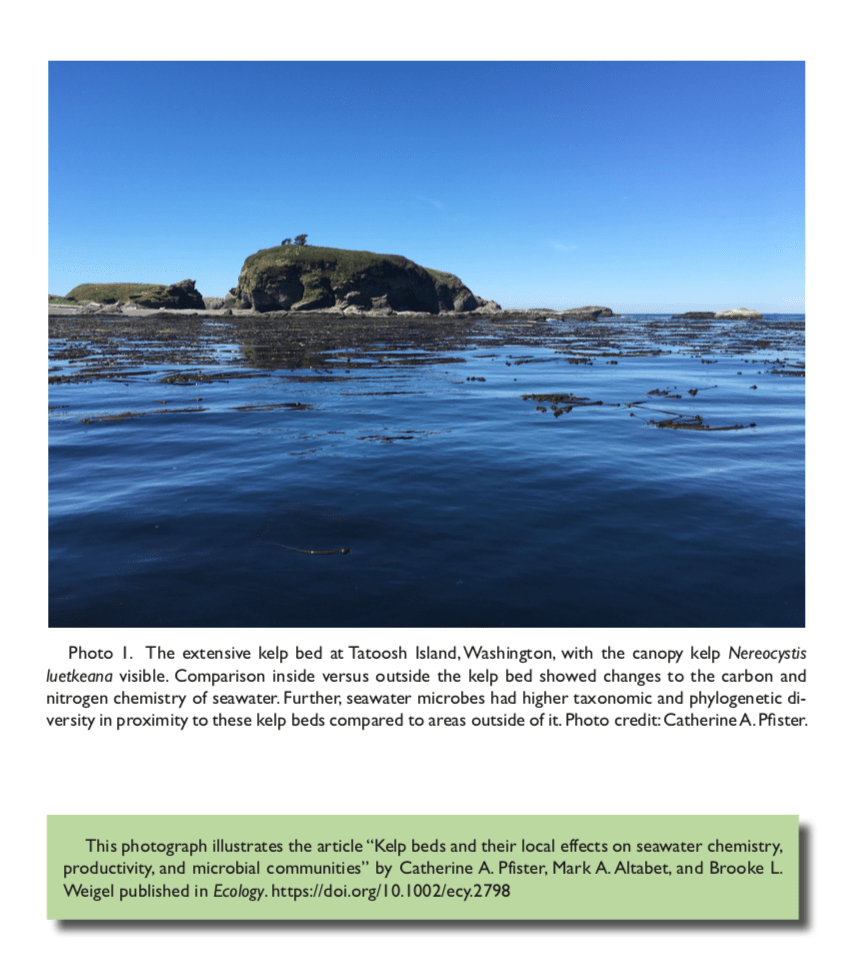Kelp forest dynamics
What will the dynamics and fate of kelp forests be in a changing climate? How can we quantify the services that kelp forests provide?
Canopy kelp species in Washington state include both the bull kelp (Nereocystis luetkeana) and the giant kelp (Macrocystis pyrifera). It is known that these algae provide habitat for myriad invertebrates and fishes. Less understood is how they interact with seawater and whether they can locally ameliorate changes to the seawater carbonate cycle. With funding from NOAA Coastal and Ocean Climate Applications, we are investigating these questions off the Washington shore.
Based on historic surveys in 1911 and 1912, and 26 years of aerial surveys from the Washington DNR, we found that kelp beds in the western reaches of the Strait of Juan de Fuca and the outer coast are remarkably persistent, even if variable in abundance. Kelp beds in the eastern Strait and in proximity to Puget Sound have declined in abundance. Kelp forest dynamics are related to climate drivers such as the PDO and the NPGO. See the paper: Pfister_et_al-2017-Journal_of_Ecology.
Read about Washington Department of Natural Resources long-term commitment to studying kelp forests
Read the Blog post about kelp forests in the Journal of Ecology
See the back story and video: Kelp Forests and change over decades and centuries in the Pacific Northwest https://www.uchicagomedicine.org/biological-sciences-articles/world-war-i-era-maps-help-track-history-of-kelp-forests-in-pacific-northwest


Helen Berry and Tom Mumford of WDNR and curators of kelp forest data in Washington state
Kelp beds change local seawater chemistry and entrain a different microbial assemblage in their vicinity. Look for our full Ecology paper on this: Kelp beds and Their Local Effects on Seawater Chemistry, Productivity, and Microbial Communities. https://esajournals-onlinelibrary-wiley-com/doi/abs/10.1002/ecy.2798 (Pfister et al 2019, Ecology)

